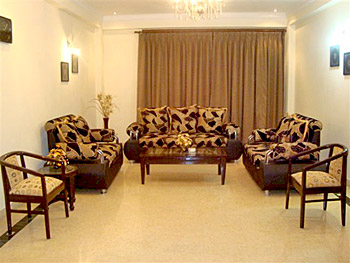Various units in apartments and flat systems can be built by following the tenets of Vastu Shastra.
Windows of Flat: For proper ventilation, it is advantageous to have a door or window in front of the main door. If the door is in the East, the window should be in the West.
Flooring of the Flat: The flooring of the different sections of the flat will differ. The flooring of the place of worship will be different from that of the bedroom. However, the level of the flooring in the East and North should be low if the flooring is to be done in two or more than two levels.
Kitchen in the Flat: The ideal place to locate the kitchen in the flat is in the East - South-East. Apart from the direction regarding its location other factors are also discussed in the Indian Vastu Shastra.
Dining Table in the Flat: It is most advantageous to arrange properly the dining table in the kitchen. But the arrangement should be in the West. It is allowed to arrange it in the East or the North.
Bedroom in the Flat: The bedroom can be placed in any part of the flat. In the Bedroom, it is better to have the master-bed in the South-West.
 Seating Room in the Flat: As far as possible, avoiding the South-East, South West or South, it is advantageous to have the seating room in the flat either in the North - East, East, North or North - West.
Seating Room in the Flat: As far as possible, avoiding the South-East, South West or South, it is advantageous to have the seating room in the flat either in the North - East, East, North or North - West.
Bathroom in Flat: It is advantageous to have the bath-room in the flat either in the East, West, North or North-West. For want of a space, it is permissible to have in the South. But the bathroom in the flat must never be in the South - East or South - West corners.
Vastu in Different Units of a Flat: Children`s Bed, Study cum Meditation room in the flat and gardens are also part of a flat. These too must be build according to principles of Vastu Shastra.
Pooja Ghar and Other Structures in a Flat: A separate Pooja Ghar, if possible, should be built in the North-East, North West, East or West directions. Apart from this the other units, such as, guest room, toilet, storeroom and even the parking should be built by following the art of Vastu Shastra.




















